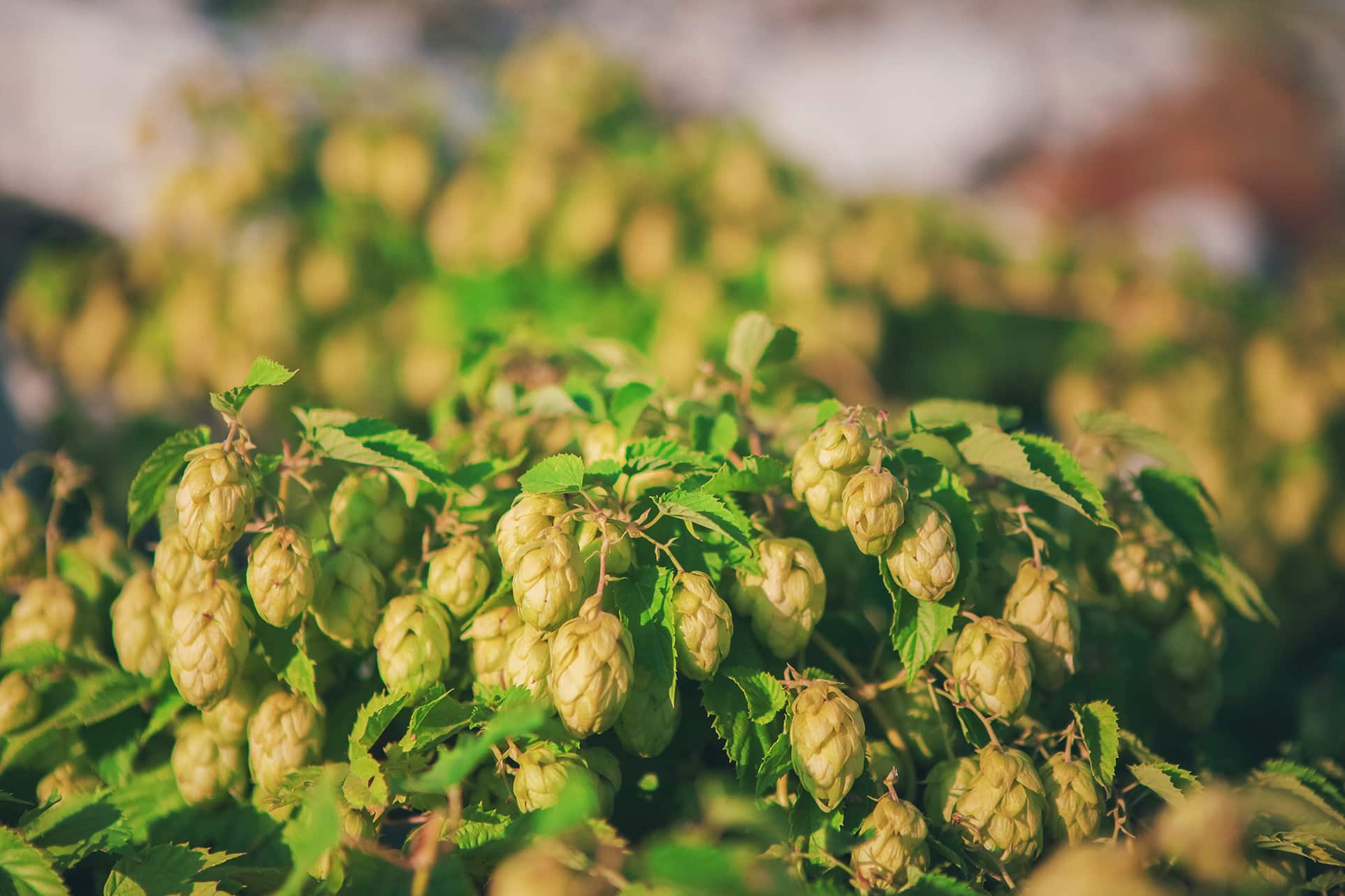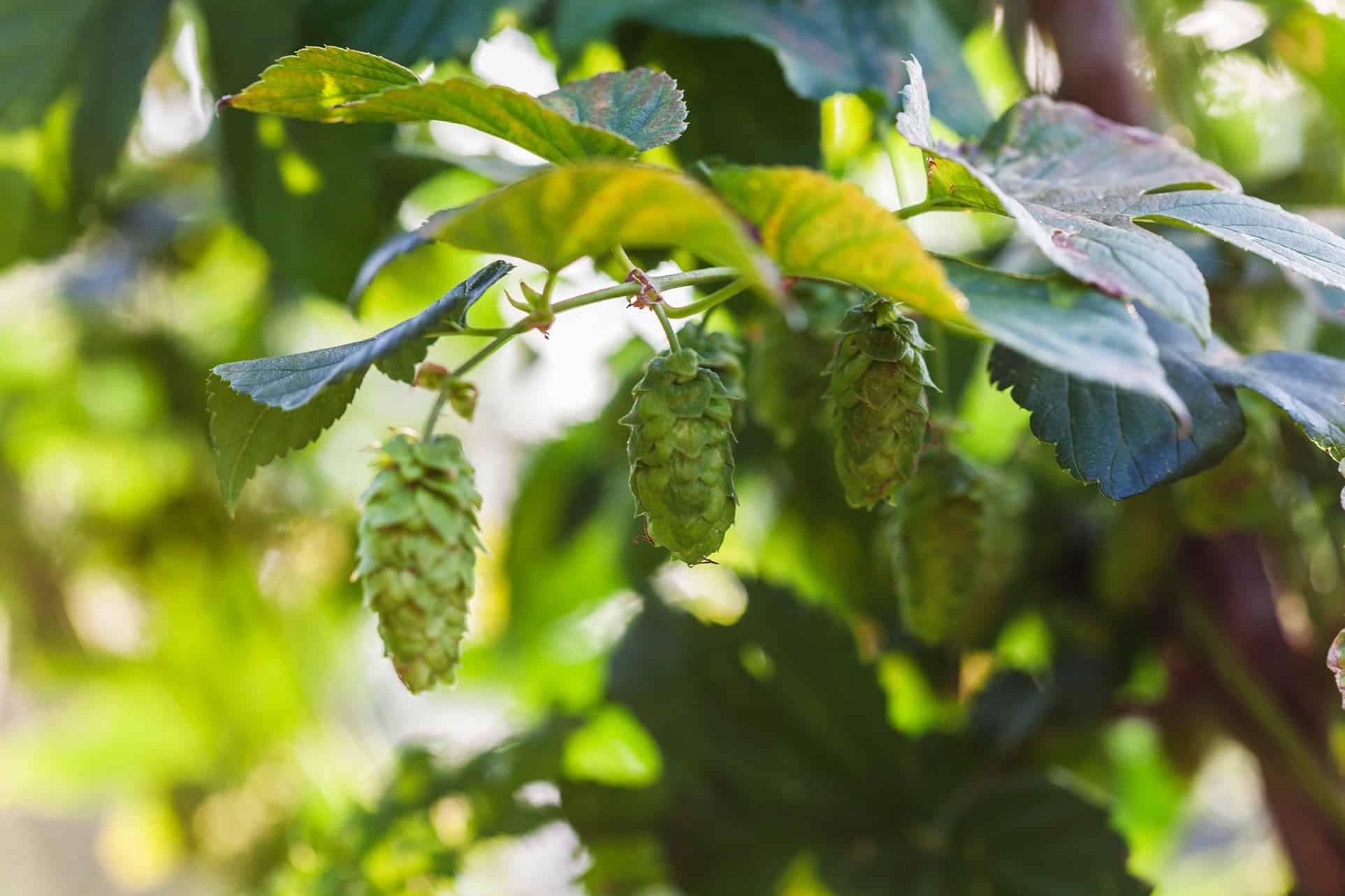Essential Brewing Supplies for Home Brewers: Your Ultimate Guide to Crafting Perfect Beer
Are you thinking about starting a journey into the world of home brewing? Crafting your own beer at home unleashes your creativity and offers a rewarding way to enjoy this beloved beverage. The secret to brewing the perfect pint lies in having the right ingredients and supplies. From selecting quality grains to choosing the best fermentation vessels and tools, the essentials can make all the difference in achieving that rich, flavourful brew you crave. This ultimate guide to essential brewing supplies will arm you with everything you need to get started, so you can impress friends and family with your homemade craft beer. Whether you’re a complete novice or looking to refine your home brewing setup, read on as we look into the must-have equipment and ingredient supplies for the home brewer. Get ready to turn your kitchen into a mini brewery and craft the perfect beer, one delicious batch at a time!
Essential Equipment for Home Brewing
Setting up a home brewery requires a few fundamental pieces of equipment that form the backbone of the brewing process. You may wish to look at an all-in-one system like a Grainfather kit.
The first essential item is a high-quality brewing kettle. This large pot, typically made from stainless steel, is where the magic begins. It is used to boil the wort, the liquid extracted from the mashing process that contains the sugars to be fermented. A kettle with a capacity of at least 5 gallons is recommended to ensure adequate room for the boil and prevent messy overflows.
Next on the list is a fermenter, a vessel where the wort is transferred after boiling and where the yeast converts sugars into alcohol. Fermenters come in various types, including plastic buckets, glass carboys, and stainless-steel fermenters. Each type has its pros and cons, but glass and stainless steel are often preferred for their durability and ease of cleaning – and cleanliness is key. It’s also important to have an airlock, which allows carbon dioxide to escape during fermentation while keeping contaminants out.
A hydrometer is another vital tool in a home brewer’s arsenal. This device measures the specific gravity of the wort, which helps determine the potential alcohol content of the beer. By taking readings before and after fermentation, brewers can calculate the alcohol by volume (ABV) of their brew. Additionally, a thermometer is crucial for monitoring the temperature at various stages of the brewing process, especially during mashing and fermentation, where precise temperature control can significantly impact the final product.
Choosing the Right Ingredients
The quality of your beer is largely determined by the ingredients you select. You’ll most likely already know that the four fundamental components of beer are water, malt, hops, and yeast. Each of these elements plays a vital role in the brewing process and contributes to the flavour, aroma, and character of the final product.
Water serves as the primary ingredient in beer, comprising about 90% of the final product. The mineral content and pH of the water can significantly influence the taste of your beer. While tap water is often suitable for brewing, some home brewers prefer using filtered or bottled water to ensure consistency and avoid any unwanted flavours from chlorine or other additives.
Malt, typically derived from barley, provides the sugars needed for fermentation. The type and amount of malt used can vary significantly depending on the beer style being brewed. For instance, pale malt is commonly used in lighter beers like pilsners and pale ales, while darker malts, such as chocolate or black malt, are used in stouts and porters to impart their rich, roasted flavours. Speciality grains can also be added to create unique flavour profiles.
Hops are the flowers of the hop plant and are used to add bitterness, flavour, and aroma to the beer. They also act as a natural preservative. There are hundreds of different varieties of hops, each with its own unique characteristics. For example, Cascade hops are known for their floral and citrus notes, making them a popular choice for American pale ales, while Saaz hops are prized for their spicy, earthy qualities and are often used in traditional European lagers.
Yeast is the microorganism responsible for fermentation, converting the sugars in the wort into alcohol and carbon dioxide. There are two main types of yeast used in brewing: ale yeast and lager yeast. Ale yeast ferments at warmer temperatures and typically produces more fruity and complex flavours, while lager yeast ferments at cooler temperatures and results in a cleaner, crisper taste. The type of yeast you choose will depend on the style of beer you want to brew.
The Importance of Sanitisation in Brewing
One of the most critical aspects of home brewing, and often the most overlooked by beginners, is sanitation. Proper sanitisation is essential to prevent unwanted bacteria, wild yeast, and other contaminants from spoiling your beer. Even the slightest contamination can lead to off-flavours, infections, and wasted batches, making it imperative to maintain a clean brewing environment.
Before you begin brewing, it’s crucial to thoroughly clean and sanitise all equipment that will come into contact with the wort or beer. This includes your brewing kettle, fermenter, airlock, siphon, bottles, and any other tools or utensils. Cleaning removes dirt and organic material, while sanitising kills any microorganisms that could cause contamination. It’s important to use a food-grade sanitiser that will be effective and safe for brewing.
During the brewing process, pay careful attention to any surfaces or tools that may come into contact with the wort after it has been boiled. Boiling the wort effectively kills most contaminants, but once it cools, it becomes susceptible to infection. Always sanitise your fermenter, airlock, and any other equipment that will touch the cooled wort. Additionally, practice good hygiene by washing your hands and working in a clean environment.
Bottling your beer also requires meticulous sanitisation. Each bottle and cap must be thoroughly sanitised to prevent contamination during the bottling process. Using a bottling bucket with a spigot can help minimise the risk of contamination, as it allows for a more controlled and sanitary transfer of beer from the fermenter to the bottles. Remember, a clean brewing process is key to producing high-quality, delicious beer.
Brewing Process: Step-by-Step Guide
The brewing process can be divided into several key steps, each of which plays a crucial role in creating the final product. By understanding and mastering each step, you can ensure that your homebrew turns out as you envisioned.
If you’re not yet at the point of being able to design your own recipe there are plenty of homebrew shops or resources on the internet with recipe generators or ready to brew recipe kits.
Once you know what you are brewing and have bought the ingredients, the first step is mashing. This is where malted grains are mixed with hot water to extract fermentable sugars. This mixture, known as the mash, is typically held at a specific temperature for about an hour to allow the enzymes in the malt to break down the starches into sugars. The temperature and duration of the mash can vary depending on the recipe and the desired characteristics of the beer. After mashing, the liquid—now called wort—is separated from the spent grains through a process called lautering.
Next, the wort is brought to a boil, usually for about an hour. Boiling serves several important purposes: it sterilises the wort, extracts the flavours and bitterness from the hops, and evaporates unwanted volatile compounds. Hops are typically added at different stages of the boil, with earlier additions contributing more bitterness and later additions adding more aroma and flavour. Some brewers also add other ingredients, such as spices or fruit, during the boil to create unique flavour profiles.
After boiling, the wort must be cooled quickly to a temperature suitable for fermentation. This is often accomplished using a wort chiller, which can be an immersion chiller, counterflow chiller, or plate chiller. Rapid cooling is crucial to prevent contamination and to achieve a clear beer by causing proteins to coagulate and settle out. Once the wort is cooled, it is transferred to the fermenter and yeast is added, or pitched, to initiate fermentation.
Fermentation is where the magic happens. The yeast consumes the sugars in the wort, producing alcohol, carbon dioxide, and a variety of flavour compounds. This process can take anywhere from a few days to several weeks, depending on the type of yeast and temperature. It’s important to maintain a consistent temperature during fermentation to ensure the yeast performs optimally and avoids off-flavours. Once fermentation is complete, the beer is typically conditioned for a period to allow the flavours to mature and any remaining yeast to settle out.
We will generally encourage home brewers to source our products through a reputable home brew shop. The packaging sizes that we offer are often too large for a home brewer’s requirement unless in a buying co-operative. We do however, offer yeast sachets on our online shop.
Common Brewing Techniques and Tips
As you gain experience in home brewing, you’ll discover various techniques and tips that can help improve your process and the quality of your beer. One common technique is dry hopping, which involves adding hops to the fermenter after fermentation is complete. This adds a fresh hop aroma and flavour to the beer without increasing bitterness, making it ideal for styles like IPAS and pale ales.
Another useful tip is to use a yeast starter, especially for high-gravity beers or lagers. A yeast starter is a small batch of wort used to propagate yeast before pitching it into the main batch. This helps ensure a healthy, vigorous fermentation and reduces the risk of off-flavours caused by stressed yeast. To make a yeast starter, simply boil a small amount of malt extract with water, cool it, and add your yeast. Allow it to ferment for a day or two before pitching it into your main batch.
Temperature control is crucial in brewing. Different yeast strains have optimal temperature ranges, and fermenting outside these ranges can lead to undesirable flavours. Using a temperature-controlled fermentation chamber or a simple temperature controller with a refrigerator can help maintain a consistent fermentation temperature. Moreover, paying attention to the temperature during mashing and boiling helps achieve the desired characteristics in your beer.
Another technique to consider is adjusting water chemistry. While many home brewers start with local tap water, modifying the mineral content and pH of your brewing water can significantly impact the flavour and quality of your beer. There are various water treatment methods, such as adding gypsum or calcium chloride, to achieve the desired water profile for different beer styles. Testing your water and making adjustments can help you produce more consistent and better-tasting beer.
Troubleshooting Common Brewing Issues
Even the most experienced brewers encounter issues from time to time. Identifying and troubleshooting common problems can help salvage a batch and improve your brewing skills. One frequent issue is off-flavours, which can be caused by various factors. For instance, a buttery flavour (diacetyl) can result from fermentation at too high a temperature or from not allowing the yeast to fully clean up after fermentation. To prevent this, ensure proper fermentation temperatures and allow your beer sufficient time to condition.
Another common problem is stuck fermentation, where the yeast stops fermenting before reaching the desired final gravity. This can be caused by factors such as insufficient yeast pitching, low fermentation temperature, or a lack of nutrients. To address this issue, you can gently rouse the yeast by swirling the fermenter, slightly increase the fermentation temperature, or add yeast nutrient. In some cases, repitching a fresh batch of yeast may be necessary.
Cloudy beer is another issue that many homebrewers face. While some beer styles are naturally hazy, unwanted cloudiness can result from factors such as incomplete fermentation, poor yeast flocculation, or chill haze. To achieve a clearer beer, ensure proper fermentation and conditioning times, use a fining agent like gelatine or isinglass, and consider cold crashing your beer before packaging. Additionally, rapidly cooling the wort with a wort chiller can help reduce the risk of chill haze.
Infection is possibly the most dreaded problem for home brewers. Signs of infection include unusual odours, flavours, or visible mould or film on the surface of the beer. Prevention is key, so always practice good sanitation and avoid exposing your beer to potential contaminants. If you do encounter an infection, it’s best to discard the batch and thoroughly clean and sanitise all equipment before brewing again. Learning from these experiences can help you become a more skilled and confident brewer.
If you are not familiar with off flavours, you an by off-flavour kits to help identify issues within your quality control.
Advanced Brewing Supplies for Enthusiasts
As you gain more experience and passion for home brewing, you may find yourself wanting to explore advanced brewing supplies and techniques. One such piece of equipment is a grain mill, which allows you to mill your own grains right before brewing. This ensures the freshest possible malt and gives you greater control over the crush size, which can affect the efficiency of your mash and the clarity of your beer.
A conical fermenter is an advanced tool that many serious home brewers invest in. Unlike traditional fermenters, conical fermenters have a cone-shaped bottom that allows yeast and trub to settle and be easily removed without transferring the beer to another vessel. This design reduces the risk of contamination and oxidation, making it easier to produce clean, high-quality beer. Many conical fermenters also include features such as temperature control and pressure fermentation capabilities.
For those looking to elevate their water chemistry, a reverse osmosis (RO) system can be a valuable addition to your brewing setup. An RO system removes nearly all minerals and impurities from your water, providing a blank slate to develop your desired water profile. By reintroducing specific minerals, you can customise your water to emulate the characteristics of classic beer styles or align with your personal preferences.
Another advanced tool is a kegging system, which allows you to carbonate and serve your beer on draft instead of bottling it. Kegging offers several advantages, including more precise control over carbonation levels, reduced oxidation, and the convenience of having draft beer at home. A basic kegging setup includes a keg, CO2 tank, regulator, and dispensing system, such as a kegerator or a draft tower. Many homebrewers find that once they start kegging, they never return to bottling.
Recommended Resources and Books for Home Brewers
There are a wealth of resources available to help you on your home brewing journey, from books and websites to forums and local clubs. One of the most highly recommended books for beginners is “How to Brew” by John Palmer. This comprehensive guide covers everything from basic brewing principles to advanced techniques, making it an invaluable resource for brewers of all skill levels. The book is well-organised and easy to understand, with clear explanations and practical advice.
Another excellent resource is “The Complete Joy of Homebrewing” by Charlie Papazian. This classic book has inspired countless home brewers and is known for its approachable and enthusiastic tone. Papazian’s mantra, “Relax, don’t worry, have a homebrew,” encourages brewers to enjoy the process and not get too stressed about the details. The book includes a wide range of recipes and tips, making it an excellent starting point for those new to the hobby.
For those interested in exploring the science behind brewing, “Yeast: The Practical Guide to Beer Fermentation” by Chris White and Jamil Zainasheff is an excellent choice. This book delves into the biology and chemistry of yeast and fermentation, offering a deeper understanding of how yeast operates and how to optimise fermentation. It’s a valuable resource for advanced brewers who aim to refine their techniques and produce consistently high-quality beer.
In addition to books, many online resources and communities exist where you can learn and connect with other home brewers. Websites like Homebrew Talk and the American Homebrewers Association offer forums, articles, and recipe databases. Joining a local homebrew club is also a great way to meet other brewers, share tips and experiences, and participate in events and competitions. These resources can help you continue learning and growing as a brewer.
Conclusion: Start Your Brewing Journey Today
Home brewing is an incredibly rewarding hobby that combines creativity, science, and a love for great beer. By equipping yourself with the essential brewing supplies and knowledge outlined in this guide, you’re well on your way to crafting perfect pints in the comfort of your own home. Whether you’re a complete novice or looking to refine your brewing setup, the key to success lies in understanding the process, selecting quality ingredients, and maintaining proper sanitation.
With each batch you brew, you’ll gain more experience and confidence, which will allow you to experiment with new styles, flavours, and techniques. The world of home brewing is vast and ever-evolving, offering endless opportunities for learning and discovery. From the satisfaction of brewing your first successful batch to the joy of sharing your creations with friends and family, the journey is as enjoyable as the destination.
So, gather your equipment, select your ingredients, and move into the exciting world of home brewing. With patience, practice, and a passion for great beer, you’ll soon be crafting brews that rival those of your favourite craft breweries. Cheers to your brewing adventure and the delicious beers that await!












